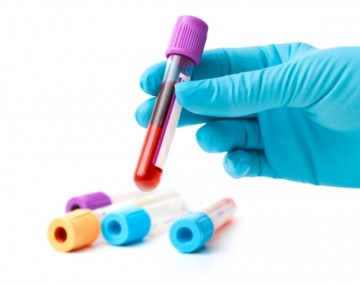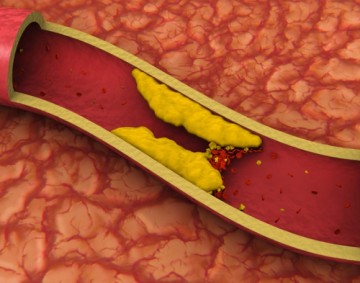By Dr. Kiran Veerapen on December 18, 2012
Before this incident in the emergency room, I had no established teaching practice that focused consciously on checking the veracity of a trainees’ use and understanding of medical terminology. This challenged my assumption that the medical student comprehended such composite terms accurately.
By Dr. Steve Wong on December 18, 2012
As 2012 draws to a close, I’d like to take an opportunity to thank all of our readers for their support, suggestions, and encouragement. It’s been a very gratifying experience for all of us involved at This Changed My Practice.
By Dr. William T. Gibson on December 3, 2012
From a medical perspective, I advise people who are thinking about DTC genetic testing to think of it like the over-the-counter (OTC) medical tests available in many pharmacies.
By Drs. Jason Hart and Neda Amiri on November 20, 2012
In April 2012, NEJM published The EINSTEIN-PE study, which looked at the use of oral Rivaroxaban for the treatment of symptomatic pulmonary embolism in 4833 patients.
By Dr. Laura Sauvé on November 5, 2012
Rotavirus vaccines can prevent important morbidity for young infants, and the associated physician visits, emergency department visits, hospitalizations and related parental stress and missed work days due to rotavirus infection.
By Dr. Joseph Lam on October 23, 2012
In 2009, Huang et al published a study looking at whether or not suppression of S aureus growth with bleach baths and intranasal mupirocin improves AD severity.
By Dr. Dan Ezekiel on October 10, 2012
I underwent the assessment in the spring of 2011 and, like most practices, I discovered that there were some things I was doing well and some other things that could do with some improvement.
By Dr. David Topps on September 24, 2012
DizzyFix’s diagrams walk you through the steps needed for the Dix-Hallpike and Epley’s maneuvers, including a real-time display of exactly what path and angle to move the patient’s head through, and a timer to introduce appropriate pauses.
By Dr. Maria Chung on September 10, 2012
Depression can have devastating effects on the elderly and their families. Moreover, it is often under recognized, as it can present atypically, with agitation/ anxiety, somatic symptoms, or cognitive and functional decline rather than sadness and withdrawal.
By Dr. Jiri Frohlich on August 20, 2012
Several studies established that apo B is a better predictor of risk both at baseline and on treatment than LDL-C due to the fact that small dense LDL particles are much more atherogenic as they easily penetrate the endothelial space.
By Dr. Marisa Collins on July 31, 2012
Routine HIV testing for all adults is now recommended by Vancouver Coastal Health, Providence Health and the BC Centre for Excellence in HIV/AIDS.
By Dr. Susan Hollenberg on July 10, 2012
The approval of the oral whole cell cholera and traveller’s diarrhea vaccine in Canada promised a novel approach to the prevention of TD.
By Dr. Ran Goldman on June 18, 2012
With advances in computer based gaming, safety concerns and sedentary life style of today’s families, children have been significantly less active.
By Sue Murphy on June 1, 2012
An ongoing problem with student supervision in the clinical setting is managing the expectations of Clinical supervisors. Frequently, clinical supervisors are clinicians with many years of experience in their specialty, who have not been practicing at “entry level” for some time.
By Dr. Steve Wong on May 28, 2012
Like many physicians, for many years now, I’ve been using electronic-only copies of journal articles (pdf files) for my own continuing education, reference and teaching purposes. Now, I have an easy way to organize and access documents.
By Dr. Andrew Farquhar on May 14, 2012
I direct more effort to encouraging physical activity as a critical tool in the management of T2D. I emphasize a healthy diet but stress that weight loss is not the primary goal, exercise is.
By Dr. Julian Marsden on April 30, 2012
Given their effectiveness, safety, and ability to prevent relapses inhaled corticosteroids are now part of my discharge prescription for asthma exacerbations.
By Dr. Karen Buhler on April 16, 2012
The EDS is a highly sensitive screening tool administered in less than 10 minutes and can be distributed before the encounter.
By Dr. Daniel Ngui on April 2, 2012
Given our aging population, more and more family physicians are being asked for advice about diagnosis and treatment on osteoporosis.
By Dr. Catherine Clelland on March 20, 2012
The GP Services Committee developed the Complex Care Planning fee (14033) to encourage Family Physicians to spend time with patients with multiple co-morbidities and develop a plan for their management.
By Dr. James Bergman on March 5, 2012
At present, for hemangiomas patients who I feel need systemic therapy I personally use oral Propanolol instead of systemic steroids, as I believe that the benefit risk analysis presently favours Propanolol.
By Dr. Karen Gelmon on February 20, 2012
There has been an explosion of information about the genetics and molecular makeup of breast cancers with a heightened understanding that this is not one disease. Using newer sequencing technology, researchers have suggested 9 distinctive types of the disease.
By Dr. Michael Clifford Fabian on February 6, 2012
Cerumen build-up is a common problem for patients and doctors alike. According to McCarter et al cerumen impaction is present in approximately 10 percent of children, 5 percent of normal healthy adults and up to 57 percent of older patients in nursing homes.
By Dr. Breay Paty on January 23, 2012
These oral agents, administered once daily, augment endogenous GLP-1, resulting in an A1C reduction of 0.5 – 0.9%. Since GLP-1 does not directly stimulate insulin, they have the advantage of not promoting hypoglycemia or weight gain.
By Dr. Steve Wong on January 9, 2012
This app allows a very rapid entry of relevant parameters to perform risk assessments using the Framingham Risk Score but also the Reynolds Risk Score.























Recent Comments